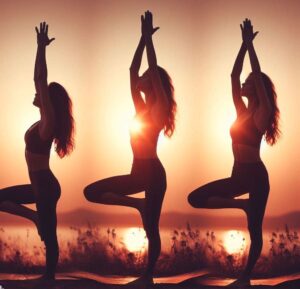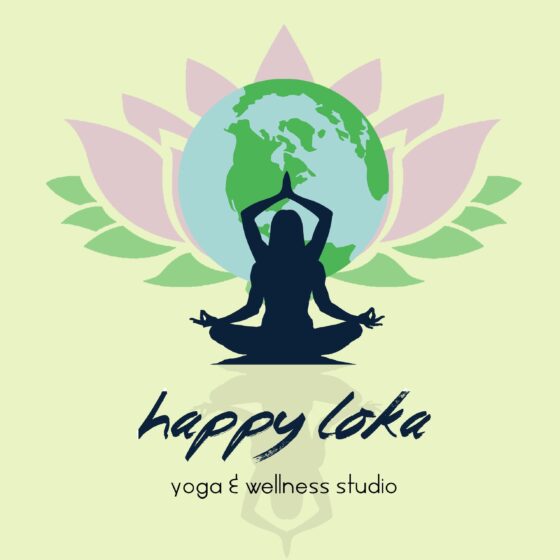
Yoga, an ancient practice originating in India, is a profound and holistic approach to well-being. It’s more than just an impressive display of physical prowess or contorting your body into pretzel-like shapes; it’s a comprehensive philosophy that embraces physical postures, mindful breathing exercises, meditation, and ethical principles.
At its very essence, yoga is about achieving harmony and balance within the self. It’s a journey towards aligning the mind, body, and spirit to attain a state of complete well-being.
Physical postures, or asanas, are a visible aspect of yoga. They promote flexibility, strength, and balance, benefiting not only the body but also the mind. By practicing these postures regularly, you can increase your physical fitness and promote a sense of grounding.
Breathing exercises, known as pranayama, are integral to yoga. They teach you to harness the power of your breath, which has a profound impact on your nervous system and emotional well-being. Controlled breathing can reduce stress, increase focus, and promote a sense of calm and relaxation.
Meditation is another vital component of yoga. It encourages mindfulness and self-awareness. Regular meditation sessions can help you quiet the chatter of the mind, reduce anxiety, and foster inner peace.
Yoga also encompasses ethical principles, known as the yamas and niyamas. These guidelines encourage self-discipline, truthfulness, non-violence, contentment, and other virtues, creating a moral compass for practitioners to follow in their daily lives.
Starting Your Day with Yoga
Starting your day with yoga is a wonderful way to infuse positivity and vitality into your daily routine. Morning yoga rituals can be truly transformative, setting the stage for a more productive and balanced day ahead.
Consider beginning your day with a gentle yoga routine that incorporates simple stretches, focused deep breathing, and a brief meditation. These practices are not time-consuming but can yield profound benefits.
As you move through the gentle stretches, you awaken your body from its slumber, promoting flexibility and relieving any overnight stiffness. Deep breathing exercises help oxygenate your body, increasing alertness and vitality.
Meditation, even if just for a few minutes, calms the mind and cultivates mindfulness. It empowers you to approach the day with a sense of clarity and inner peace, better equipped to handle challenges that may arise.
Creating a Sacred Space
Creating a sacred space within your home is essential for a consistent and enriching yoga practice. Find a peaceful corner free from distractions, clutter, and noise. It should be a place where you can focus and reconnect with yourself.
Enhance the ambiance by adding a comfortable yoga mat, appropriate attire, and perhaps some soothing music or aromatic essential oils. These elements create a serene atmosphere that invites relaxation and mindfulness.
Having a dedicated yoga space serves as a visual cue for your brain, signaling that it’s time for self-care and introspection. It helps establish a routine and reinforces the importance of your daily practice, making it easier to commit to the holistic benefits of yoga in your life.
Choosing the Right Style

When delving into the world of yoga, you’ll discover a rich tapestry of styles, each with its unique approach and benefits. The key to a fulfilling yoga journey lies in selecting the style that aligns with your needs and resonates with your preferences.
Hatha yoga, for example, is an ideal starting point, especially for beginners. It emphasizes gentle postures and provides a solid foundation for understanding basic poses and alignment. This style is perfect for those looking to ease into the practice and focus on mastering individual asanas.
On the other hand, Vinyasa yoga is a more dynamic and fluid practice. It involves seamlessly transitioning from one pose to another in sync with your breath. This style is great for individuals seeking a more active and flowing yoga experience that also builds strength and flexibility.
For those who thrive on structure and discipline, Ashtanga yoga might be the perfect fit. It follows a predetermined series of poses and sequences, making it a rigorous practice that cultivates discipline and concentration.
Short Sessions for Busy Days
In our hectic lives, jam-packed with responsibilities, there are bound to be days when time feels like a luxury. But even on these busy days, it’s important not to abandon your yoga practice entirely. Instead, consider incorporating shorter sessions into your schedule.
A quick 15-minute yoga routine can work wonders in alleviating stress, enhancing your mood, and providing a sense of rejuvenation. Whether you roll out your mat in the morning, sneak in a few poses during a break, or indulge in a brief yoga session during lunchtime, these mini-sessions can infuse your day with positivity and energy.
Remember, yoga doesn’t always require a significant time commitment. Embracing shorter practices on busy days ensures that you continue to reap the numerous benefits of yoga, even when life is at its most demanding.
Involve the Whole Family
Yoga is not limited to a particular age group. Encourage your family members, including children, to join in. Family yoga sessions can be a fun way to bond while reaping the benefits of this ancient practice together. Kids’ yoga classes are designed to be engaging and age-appropriate, making it a wholesome family activity.
Online Resources and Apps
The world of yoga has seamlessly transitioned into the online, providing a treasure trove of resources at your fingertips. Whether you’re just beginning your yoga journey or you’re a seasoned yogi, the internet offers a vast array of apps and websites that cater to every skill level and preference.
For beginners, there are user-friendly apps and websites that provide step-by-step instructions for basic poses and gentle sequences. These resources are designed to introduce newcomers to the fundamentals of yoga and help build a solid foundation.
Intermediate and advanced practitioners can explore more challenging routines and delve into specialized yoga styles through online platforms. Whether you’re interested in power yoga, hot yoga, or restorative yoga, there are tailored sessions available.
Additionally, many online platforms offer a variety of instructors, allowing you to choose someone whose teaching style resonates with you. This personalization ensures that your online yoga experience is not only convenient but also enjoyable and effective.
Setting Realistic Goals
When incorporating yoga into your daily routine, it’s important to set achievable goals. Start with a commitment to practice three times a week and gradually work your way up. Yoga is about progress, not perfection. Be patient with yourself, and don’t get discouraged if you can’t perform advanced poses immediately.
Mindful Eating
Yoga, as a holistic lifestyle, encourages mindfulness in all aspects, including your eating habits. It’s not just about postures and breath; it’s about fostering a deep connection with your body. When it comes to nourishing yourself, embrace mindful eating. Take time to appreciate each bite, savoring the flavors and textures. Be conscious of what you consume, opting for fresh fruits, vibrant vegetables, and wholesome whole grains. These choices align with yoga’s principles of balance and harmony, promoting not only physical health but also mental clarity. By merging mindful eating with your yoga practice, you cultivate a comprehensive approach to wellness that transcends the mat and enriches your daily life.
Balancing Act
Yoga, with its profound wisdom, goes beyond physical postures and extends into the realms of life’s delicate balance. The lessons learned on the mat ripple into everyday existence. It’s not merely about the physical equilibrium you seek during yoga poses; it’s about cultivating balance across all facets of your daily life.
Yoga encourages us to pause and reflect. Listen to your body and mind; when needed, take breaks to rejuvenate. Prioritize sleep as it is the foundation of your well-being, allowing your body to recover and recharge.
Stress, an inevitable part of life, can be managed effectively through yoga’s tools. Incorporate meditation and deep breathing exercises into your routine. These practices promote inner calm, reduce anxiety, and provide mental clarity.
Yoga teaches that balance isn’t a static state but an ongoing process, a dance in which you continually adjust and adapt. By embracing these principles, you’ll find that yoga’s wisdom can guide you in navigating the challenges of life with grace and resilience, promoting a healthier and more harmonious existence.
